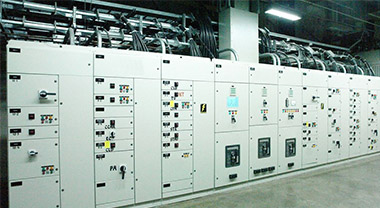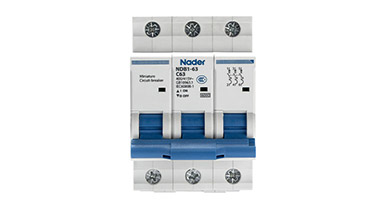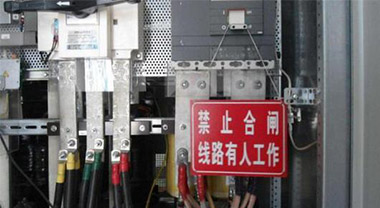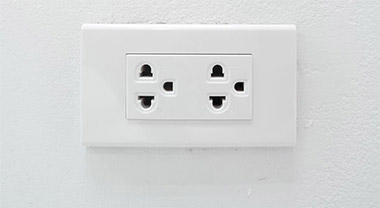Cases of Handling the Failure of High-Voltage Circuit Breaker
The high-voltage circuit breaker is an important component of the power system. The editor of the electrician learning network conducts fault diagnosis and analysis on the case of the high-voltage circuit breaker cannot be closed, shares the troubleshooting methods and experience of the high-voltage circuit breaker cannot be closed, and improves the handling of high-voltage circuit breakers for electrical practitioners Device failure skills are of great help.
High voltage circuit breaker cannot be closed Case 1:
Fault equipment: a 10kV high voltage switch cabinet.
Trouble phenomenon: This high-voltage cabinet is used to control a 10kV overhead line. After the line is overhauled, prepare to switch on and send power. When the microcomputer issued a closing command, the circuit breaker had a continuous "close-trip" phenomenon, which caused the power transmission time to be delayed by several hours and caused the user's economic loss.
Diagnostic analysis:
- Check that the DC operating power supply is in good condition.
- Check the closing contactor, intermediate relay, and connecting wires, and no abnormalities are found. And the closing contactor has been activated.
- Check the operating mechanism of the circuit breaker. It is found that the bracket and the roller shaft engage too little, which causes the closing mechanism to fail to hang firmly and fall off, and the closing position cannot be maintained.
Troubleshooting: After adjusting the closing mechanism, the fault can be eliminated.
[Experience summary]: If the circuit breaker jumps when closing, the common causes are insufficient battery voltage, damage to the silicon rectifier component, premature opening of the auxiliary normally closed contact of the circuit breaker, adhesion of the relay contact, and the position of the operating mechanism Incorrect adjustment, etc.
High-voltage circuit breaker cannot be closed Case 2:
Fault equipment: a 10kV high voltage switch cabinet.
Trouble phenomenon: In the process of closing operation, there is a failure phenomenon that cannot be closed electrically.
Diagnostic analysis:
- It can be closed normally by manual operation, which shows that there is no problem with the mechanical transmission parts.
- Check that the closing control circuit, relays, closing coils, auxiliary contacts, connecting wires, etc. are all in good condition.
- In addition to the failure of the circuit breaker's closing failure, the operating mechanism and electrical circuit failure, the operating power supply problem cannot be ignored. The closing power source of this circuit breaker is a DC battery pack, which has been in operation for several years. A few months ago, it was discovered that the voltage of a battery had dropped seriously.
- Measure the voltage of the closing bus bar, it is 215V, the voltage does not seem to be low. But this is the no-load voltage. The impulse current is very large when closing, reaching more than 100A. If the battery pack fails, the internal resistance of the power supply will increase, causing the terminal voltage to drop greatly.
- According to actual measurement, at the moment of closing, the terminal voltage of the battery pack is less than 100V. Although the closing iron core can operate at this time, the mechanism cannot be lifted due to insufficient electromagnetic force and the circuit breaker cannot be closed.
Troubleshooting: Replace the faulty battery.
[Experience summary]: In substations that use DC operating power, maintenance-free battery packs should be used. It is also necessary to conduct regular inspections of maintenance-free batteries, and timely repair or replace batteries that do not meet the requirements to ensure the normal operation of the operating system.
High-voltage circuit breaker cannot be closed Case 3:
Fault equipment: 5# high voltage switch cabinet (10kV, used to control 1600kV.A power transformer) in a company's substation.
Trouble phenomenon: The electrician on duty transmits power to the 5# high voltage cabinet according to the order of the dispatcher. During the closing process of the circuit breaker, a loud "bang" sound was heard in the switch cabinet, and the closing operation failed.
Diagnostic analysis:
- The electrical main circuit of the 5# high voltage cabinet is shown in Figure 1. The circuit breaker is a ZN28-10 handcart type vacuum circuit breaker. Pull out the handcart for inspection. At this time, the actual mechanical position of the circuit breaker is displayed as the open position, but in the display device of the electrical compartment, it shows that the phase C circuit is still live.
- Check the appearance of the vacuum interrupter. Through the glass shell, it can be seen that the inside of the A phase and B phase vacuum interrupters are normal, the shielding cover and other parts are clean and bright, and the surface of the shielding cover inside the C phase interrupting chamber is black, and there are obvious burn marks. decline.
- The AC withstand voltage test was performed on the three phases of the circuit breaker, and it was found that both phase A and phase B could meet the specification requirements (42kV/min), and when the test voltage of phase C rose to 3kV, the vacuum interrupter was broken down.
- The power industry standard clearly stipulates that at the end of the allowable storage period of the vacuum circuit breaker, the gas pressure inside the vacuum interrupter shall not be greater than 6.6×102Pa; when the vacuum interrupter is delivered with the vacuum circuit breaker, the gas pressure inside the vacuum interrupter must not be Greater than 1.33×102Pa. A vacuum tester is used to detect the vacuum of the circuit breaker. Phase A is 4×102 Pa, Phase B is 3.4×102 Pa, and Phase C is 5×102 Pa. This shows that the vacuum of the power transformer of the C-phase interrupter has basically failed. .
Troubleshooting: Replace the C-phase vacuum circuit breaker.
[Experience summary]: Vacuum circuit breaker is a circuit breaker with vacuum as the medium and arc extinguishing means. It is an important control and protection appliance in the power system. If there are faults and defects, it will not be able to control and protect, and even cause grid faults and personal accidents. Therefore, it is necessary to observe and test the vacuum degree and insulation performance of the vacuum circuit breaker regularly or irregularly, and replace the vacuum interrupter that has reached the service life or has abnormal phenomena in time.




